-
Top

-
introduction

- Yumedono
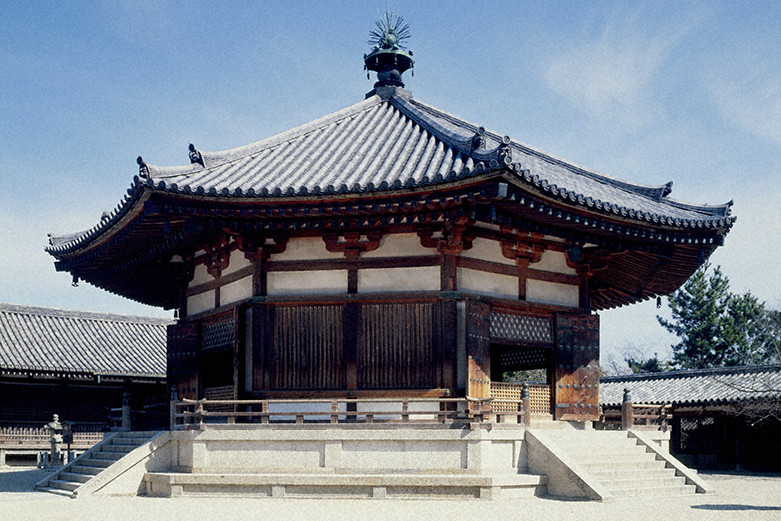
Hall of Dreams (Yumedono)
The octagonal Yumedono, or Hall of Dreams, is one of Horyuji Temple’s most impressive buildings. The scholar-priest Gyoshin Sozu commissioned its construction in 739 as a monument to Shotoku Taishi. The building was constructed on the site of the prince’s private palace, where he lived until his death in 622. The Hall of Dreams derives its name from a legend that a golden Buddha once appeared to Shotoku Taishi in a dream.
A shining jewel sits atop the roof in the shape of a reliquary. Japan adopted the construction of octagonal wooden halls for use as memorial chapels and the Hall of Dreams is one such example. Memorial services honoring Shotoku Taishi are held in the building, which houses the Kuse Kannon, a statue built in the likeness of Shotoku Taishi and considered to be a masterpiece of seventh-century Buddhist art. The Kuse Kannon is believed to have the power to save people from suffering. Other important statues in the hall are a Nara period (710–794) dry-lacquer statue of the priest Gyoshin Sozu and a Heian period (794–1185) clay statue of the Dosen Risshi, a priest who renovated the Hall of Dreams during the Heian period.
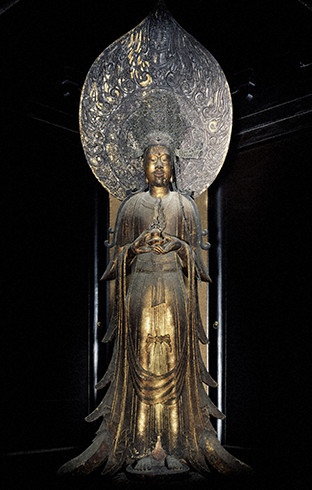
Statue of Kuse Kannon
This seventh-century statue of Kuse Kannon is one of Horyuji Temple’s most mysterious treasures. The Kuse Kannon is believed to have the power to save people from suffering. The sculptor created this 179-centimeter tall image by carving it from a single piece of camphor wood and gilding it from head to toe. Legend has it that this Kannon is a depiction of Shotoku Taishi. The statue is remarkably well-preserved because the temple rarely unveils it to the public in honor of the prince.
When the American historian of Japanese art Ernest Fenollosa (1853–1908) and Japanese scholar and artist Okakura Tenshin (1863–1913) visited the temple during the Meiji period in 1884, they decided to unwrap the statue against the priests’ dire warnings. The statue can now be seen twice a year for about a month each during the spring and fall.
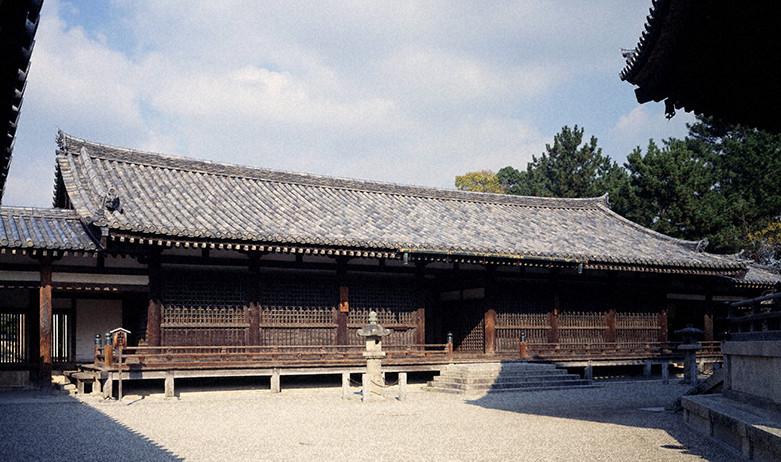
Hall of Relics (Shariden) and Picture Hall (Eden)
The Hall of Relics (Shariden) and Picture Hall (Eden) were originally a repository built to store artifacts related to Shotoku Taishi, but these were remodeled in the Heian period (794–1185). The western side became the Picture Hall (Eden), the interior of which is lined with wall murals depicting the life of Shotoku Taishi, while the eastern side became the Hall of Relics. The current Hall of Relics is a Kamakura period (1185–1333) hall which houses relics of Shakyamuni, the historical Buddha. The word shari refers to the bones left after the cremation of the Buddha’s body. According to legend, the shari contained in the Hall of Relics sprang from the hands of Shotoku Taishi, who was only two years old at the time, as he brought his hands together in prayer.
Paintings illustrating the life of Shotoku Taishi, which once hung on the walls of the Picture Hall, is now in the Tokyo National Museum.
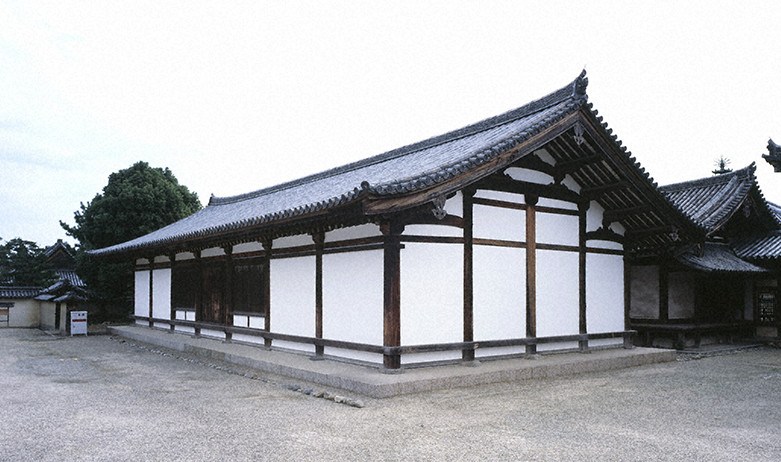
Denpodo (Hall of Transmission of the Buddhist Teachings)
The Denpodo is a lecture hall in the Eastern Precinct of the temple that was originally the home of Tachibana no Konakachi, a grandchild of Lady Tachibana (the mother of Emperor Shomu’s consort Empress Komyo [701–760]). She subsequently donated this building to the temple. This hall has fascinated architects with its stout construction and intricate pattern of frog-leg struts in the ceiling which support heavy transverse “rainbow beams” known as koryo. It is considered an important building in the history of Japanese architecture as historians believe it is the only extant example of Nara period residential architecture.
The interior of the hall enshrines around twenty statues from the Nara (710–794) and Heian (794–1185) periods, including a set of the Four Heavenly Kings (Shitenno), who are the guardians of Buddhism, and three sets of Amida Nyorai (Amitabha) statues flanked by bodhisattva attendants.
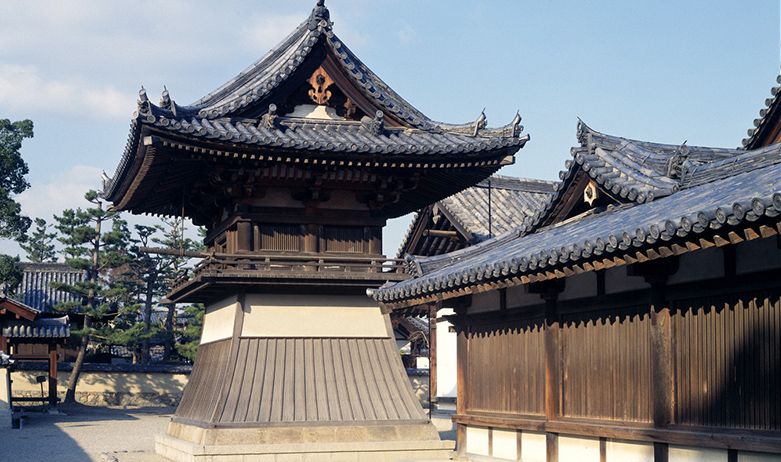
Tōin Shōrō (Bell House of the Eastern Precinct)
The Bell House of the Eastern Precinct is constructed in a trapezoidal form known as hakamagoshi (spreading skirt). Within it hangs a Nara-period bell that has the words "Chūgūji" (Chūgū Temple) engraved on the inside, indicating that it has been in the possession of at least one other temple over its more than 1,000-year existence Note: Architectural structures built during either the Asuka or Hakuhō periods are considered as Asuka-period architecture in this brochure.